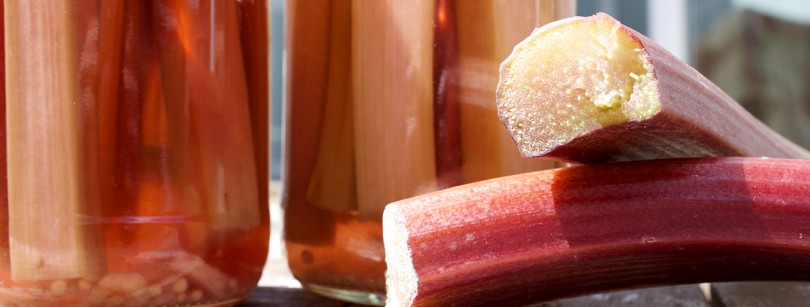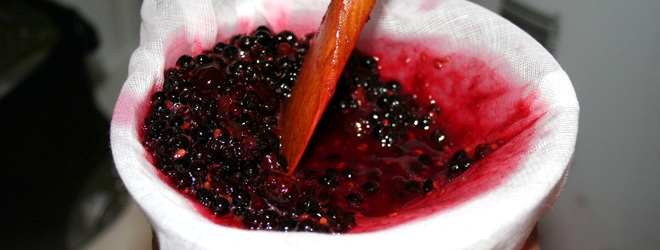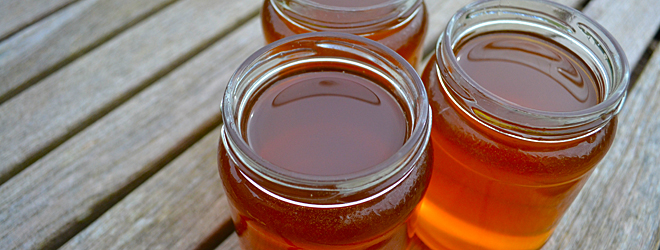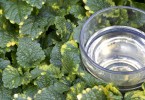Rhubarb is one of the allotment’s most productive veg but after a few months of crumbles, compotes and fools you might start to wonder what else you can do with the stuff. Not only do these five suggestions solve that problem, they’ll also keep the rhubarb flavour alive long after you’ve uprooted the year’s last stick.
What can I do with surplus rhubarb?
Booze
Rhubarb is one of our favourite alcoholic drinks ingredients, making its way into just about every type of booze we try. The easiest way to use it is by macerating in spirits and sweetening to make a liqueur. Our book features a delicious rhubarb and vanilla recipe that has been enjoyed by top TV chef Hugh Fearnley-Whittingstall.* Also in the book, and elsewhere on this site, our most popular wine recipe is rhubarb – it’s an ideal choice for wine making novices and one we make every year. We’ve also used it in cocktails and have even dabbled with a rhubarb beer.
Jam
The sweet and sharp combination of sugar and rhubarb is ideal for jam makers. You can give it a solo spot, spice it up with a hot flush of ginger or marmalise with orange. It’s also handy at bulking out other fruits – for example, if your currant harvest is a bit thin, give it a rhubarb stick to lean on and it’ll spread the currenty wealth without overpowering its flavour.
Pickle
Pickled rhubarb is a cheffy preserve that deserves more widespread recognition. Chop up a few sticks of rhubarb and soak them in your best pickling solution before serving them with grilled mackerel and you might just get the Michelin man sniffing around with a pocketful of stars. You can add some culinary creativity by combining with a few extra spices (we can recommend cloves and ginger) or go for the full chutney blowout by cooking them up with a pan full of other pickling ingredients.
Freeze
Rhubarb crumble is a comforting classic for the winter months but to enjoy it any time after July you’ll need to have a frozen supply to hand. Show some foresight by washing and chopping your rhubarb and spreading out the cubes on a tray which is then carefully balanced on the bags of frozen chips and fish fingers. Once frozen you can gleefully transfer the hard pink nuggets to their own bag and force them into a gap by the peas and sweetcorn. This method will ensure your rhubarb won’t freeze into one solid block.
Dried
We’ve not yet tried drying rhubarb, but if there’s still some left after brewing, jamming, pickling and freezing we’ll definitely give it a go. Using an oven as a drying mechanism it would seem there are two main options: either dry raw, chopped rhubarb or cook it first, with sugar, and spread on a tray before it reaches the oven. The former should make a handy store-cupboard ingredient for cereals and cakes; the latter, known as ‘rhubarb leather’, can be used as a chewy sweet or tanned, shaped and stitched into natty pink slippers.**
*This is true. We attended one of his book signings and thrust a small bottle of the stuff into his hands. He took a sip, claimed to like it and promised to finish the bottle on the train home. We never heard back from him.
**This is a lie. You can’t tan rhubarb leather.








Is it too late to use rhubarb for wine.
Nope – go for it!
With regards to the first suggestion on the list, I tried rhubarb cider for the first time last week in a local pub, definitely going to try and brew my own now. Would recommend trying it to anyone, tastes great.
Thanks for the feedback. We’ll be cider pressing very soon and have some rhubarb in the freezer waiting to do its magic. Keep us posted with your brewing notes!
[…] you just have to check out their Greenhouse Gardening: Five Top Tomato Tips post. Or learn about Five Things to Do With Surplus Rhubarb – (one of which is turn it into booze of course – they’re not called the thirsty […]
How have I only just discovered this blog? I basically grow fruit to make wine with! Never thought of rhubarb wine! Will be giving it a go soon!